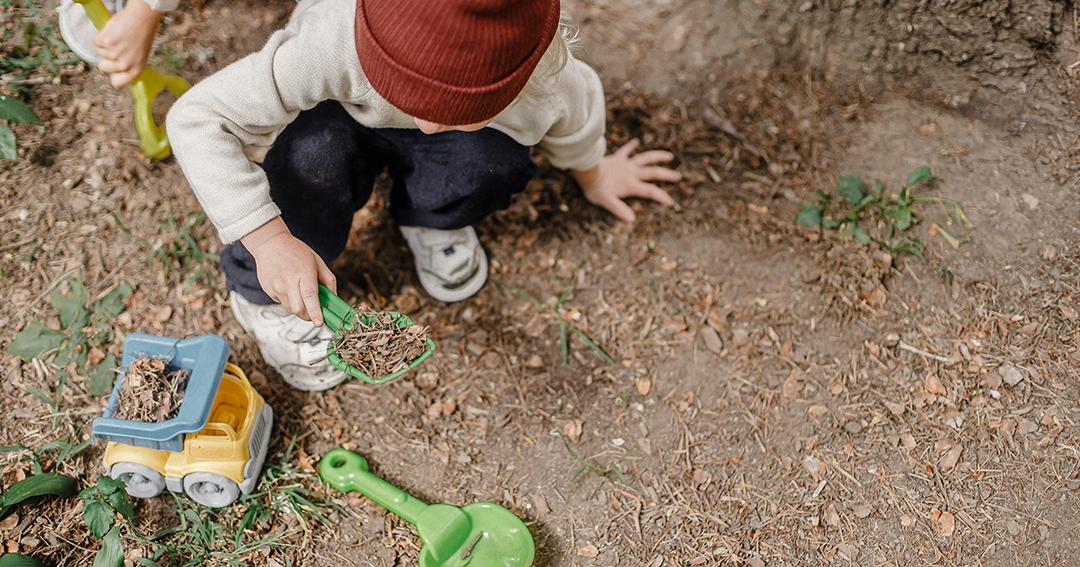Do you sometimes second-guess your “credentials” to educate your child at home? Parents, you come into homeschooling with the greatest qualifications: a deep love for your child and a vested interest in his success!
You can homeschool!
You’ve already been homeschooling your young child—you’ve taught him to talk, and you’ve taught him a variety of basic skills and character lessons. If no one told you that your child had to go off to school, what would you be doing with him? What are you already doing to motivate, stimulate, and teach him? Explore ways to simply expand what you are already doing in the context of that natural relationship, sort of a “learning lifestyle.”
Most young learners (especially preschoolers) want to play with toys and pretend, so let them! This play is their work—their early learning; it may look easy to us, but it’s not all easy to them, and it is developing their thinking skills and providing life experiences to give them a frame of reference—sort of like hooks on which to hang their future learning. But you pick the toys, so you shape the play.
Provide your child with stimulating, age-appropriate and developmentally-appropriate toys such as Duplos, Legos, or building blocks, thinking skills puzzles, art supplies, and life-skills playthings.
Everyday activities are helpful for your child’s brain and skills development. For example, working puzzles is a pre-reading skill. Having him help put away his things in an orderly fashion is classification and organization—basic science, math, and English skills.
For basic academics, foundational math encourages everyday mathematical thinking: counting and sorting objects, cooking—measuring and pouring, dividing the pizza, counting out the M&Ms. Even setting the table is one-to-one correspondence!
Everyday language practice includes alphabet puzzles, notes to Grandma, telling you about his latest adventure, or cuddling up for read-aloud time. Don’t be afraid to select reading material that slightly stretches your child’s attention and reading levels. His receptive—or listening—vocabulary is generally higher than his reading ability. Choose a variety of books, from classic children’s fiction to biographies to poetry to exploration of the wonderful world around us. And if that’s not structured enough, there are guides to help you plan a few activities based on some of those library books you are reading together or on other interests your child has.
Because these are all things that happen in the context of everyday living and his everyday play, it’s much easier to move at the child’s natural pace and in his learning style. Visit HSLDA’s Toddlers to Tweens curriculum section for more everyday activities to create an intellectually stimulating environment on a shoestring budget.
Studies show that developmentally, young children benefit from physical and creative play—building, pretending, exploring, discovering, and trying out their ideas. While an outlined, structured plan is not a necessity, many parents feel more comfortable having some specific goals, so I encourage you to have age- appropriate and developmentally appropriate expectations. An hour of one-on-one instruction is about the equivalent of three hours in a conventional setting. So, for preschool through kindergarten or even possibly first grade, an hour of one-on-one, structured learning time is usually plenty, supplemented with educational play and exploration.
What about extracurricular activities for young learners?
What does your child enjoy doing? An art or music or creative movement class might be a great outlet and inspiration. How much of a time commitment is it? Start with a short-term activity such as library craft day or the monthly kid’s project day at the home improvement store—activities your child can enjoy if it’s a good day, but if today hasn’t been such a great day, you can skip it and just go next time.
Also, what’s the focus of the class? At this age, you’re looking for low-pressure activities to let kids explore their options, get out some energy, learn some new basic skills, and develop godly character.
Don’t overcommit or overstimulate your early learner. Keep your family’s schedule in mind. Is that class at a convenient time, or will it disrupt nap routine or mealtime or bedtime? Not all kids are ready for this level of outside commitment, so just use your judgment and don’t feel pressured. Waiting a few years generally won’t stunt her progress if she is truly gifted in, say, music or dance. But if your child is ready to step out, then with the right focus, a well-chosen, low-pressure extracurricular activity can complement her cognitive learning.
Remember—you can homeschool!
Visit www.hslda.org for more information about educating your young learner. Adapted from March 2012 Toddlers to Tweens e-newsletter.




